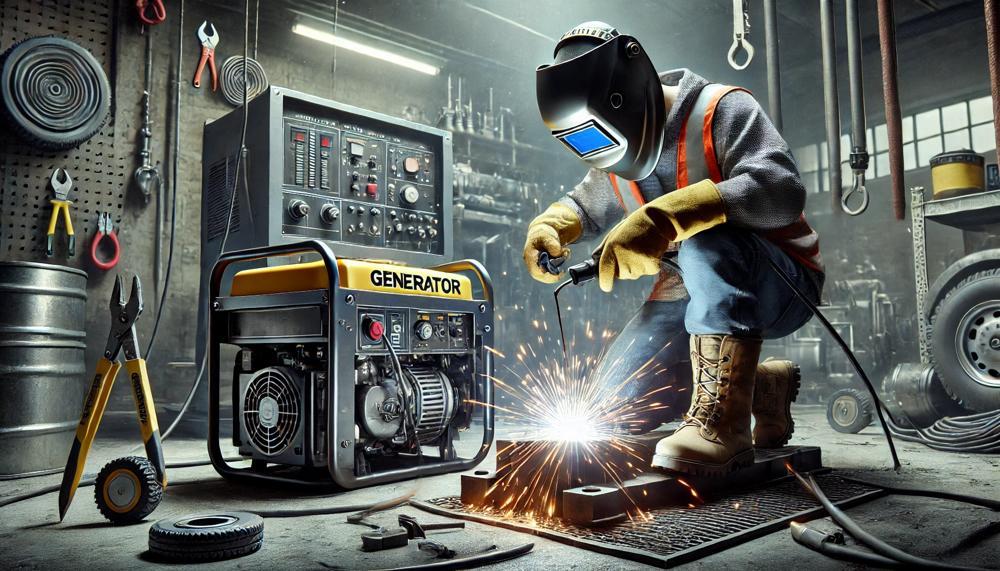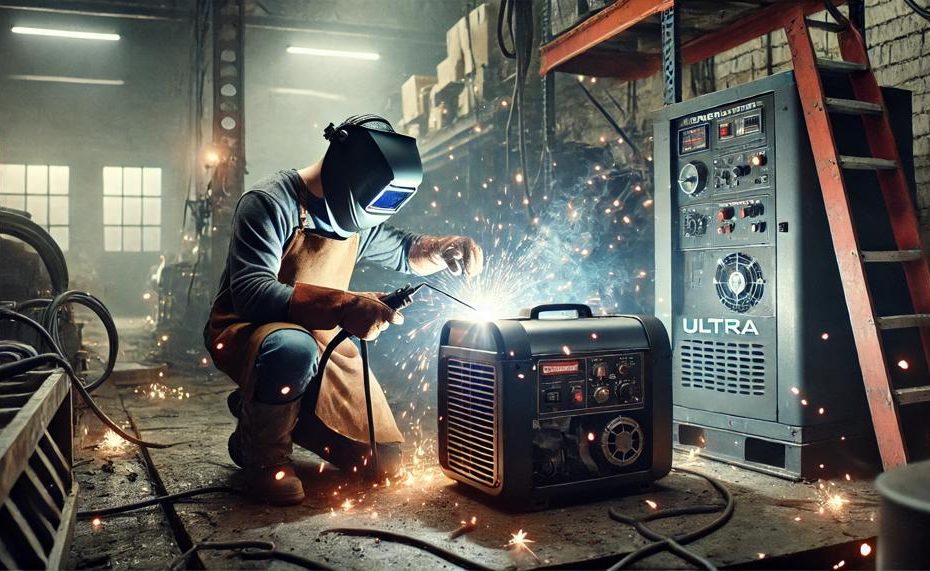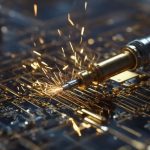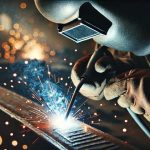Embarking on the journey of understanding the compatibility between welders and generators unveils a fascinating intersection of practical engineering and the quest for autonomy in various work environments. Whether you’re a professional welder, a hobbyist, or someone considering off-grid fabrication possibilities, this exploration into using a generator to power a welder is not just about connecting two pieces of equipment—it’s about empowering your craft wherever you may be.
In this blog post, we’ll dive deep into the nuances of marrying the robust power of generators with the precise demands of welding machines. We aim to demystify the technicalities, break down the myths, and highlight the innovations that make this combination not only possible but increasingly efficient. Here’s a snapshot of the insights you’ll gain:
- Understanding Power Requirements: How to match your welder’s needs with the right generator size and specifications.
- Safety First: Key safety considerations to keep in mind to ensure a seamless and hazard-free operation.
- Practical Applications: Real-world scenarios where using a generator-powered welder can be a game-changer.
- Technology at Play: The latest advancements making this setup more accessible and effective.
By the end of this post, you’ll have a clear understanding of the feasibility of running a welder on a generator, armed with knowledge to make informed decisions for your projects. Whether you’re welding in a remote location or simply want the flexibility to work outside the confines of a fixed power source, we’ve got you covered. Let’s ignite your curiosity and embark on this electrifying journey together.
Contents
WHY USE A GENERATOR FOR WELDING?
Opting for a generator for welding projects comes loaded with advantages, especially when contrasted with other energy sources. Here’s the lowdown on why welder generators are a notch above:
| Portability and Flexibility | Generators shine when it comes to welding in the great outdoors or places where power’s a rare find. Their mobile nature means you can lug them to just about any site, ensuring your welding gig isn’t tethered to a fixed spot. |
| Consistent Power Supply | Welder generators are champs at doling out steady power, thanks to their top-notch voltage regulation. This means you’re less likely to face the pesky power fluctuations that could mess with your welding quality. |
| Dual Duty – Power and Weld | These crafty machines aren’t just about welding. They double up as reliable backup power sources, ready to keep your home humming with electricity during outages. With a hefty 5,000-10,000 watts at your disposal, they’re more than capable of powering a fair chunk of your household appliances. |
| Cost-Efficiency | In the long haul, a welder generator could be a wallet-friendly choice. They’re built to be fuel-efficient and durable, which means they’re kinder to your pocket and less prone to frequent breakdowns. |
| High Duty Cycle | Compared to the run-of-the-mill home generators, welder generators are designed to go the distance, especially for extended welding sessions. This high duty cycle rating is a testament to their ability to withstand the rigours of continuous operation. |
In a nutshell, opting for a generator as your welding power source is a savvy move. It’s like hitting two birds with one stone – you get a flexible, reliable, and cost-effective solution that doesn’t just cater to your welding needs but also stands by as a steadfast backup power source for your home.
WHAT TYPE OF WELDERS CAN BE RUN ON A GENERATOR?
Certainly, you can run various types of welders on a generator. However, not every welder is ideal for generator use. The key lies in understanding the power requirements of the welder and ensuring the generator can supply that power without hitches.
Suitable Welders for Generator Use
| Welder Type | Key Considerations | Recommendation |
| MIG Welder | Power consistency, voltage requirements | Suitable, with adequate generator capacity |
| TIG Welder | Sensitivity to power fluctuations | Suitable, with stable power supply |
| Flux-cored Welder | Versatility, outdoor suitability | Highly suitable for most generators |
| Stick Welder | Ruggedness, power variability tolerance | Excellent for generator use |
| Plasma Cutter | High power demand | Suitable with high-capacity generators |
Keep in mind, generators should have a smooth power delivery to prevent damage to sensitive welders like TIG. Stick welders are less fussy and can work well with most generators. MIG and flux-cored welders are versatile but ensure your generator can handle their power demands. For plasma cutters, a robust generator is a must due to their high power needs.
In brief, yes, a range of welders can run on a generator, but it’s crucial to match the welder’s power needs with the generator’s capacity.
HOW MANY WATTS DOES A STICK WELDER USE?
Stick Welder Wattage Range
A typical stick welder’s power usage isn’t just a number; it’s a range that varies, driven by the ampere and voltage settings during welding tasks. Stick welders pack a punch, requiring a hefty amount of electricity.
They operate within a spectrum, generally between 5,600 and 26,000 watts. These figures stem from their amp range, which is commonly set between 40 to 200 amps.
Understanding Stick Welder Power Requirements

Calculating the required wattage for a stick welder involves knowing both the voltage (V) and the amperage (I) it operates on. This is critical, especially when you consider the compatibility with generators.
You’ll often encounter these machines running on 90 to 220 volts, a span accommodating various work conditions and metals.
Impact on Generator Compatibility
The robust demand a stick welder places on power sources means not every generator can handle its appetite for electricity. A generator’s suitability hinges on its ability to deliver sustained power within the welder’s wattage range.
This compatibility is crucial, as an inadequate power supply can lead to inefficient welding, machine damage, or safety hazards.
Wattage and Generator Size
Below is a simplified chart showing how the wattage affects the choice of generator:
| Welder Wattage | Recommended Generator Size | Practical Usage |
| 5,600 – 10,000 Watts | 7,000 – 13,000 Watts | Basic to medium tasks, suitable for on-site jobs |
| 10,000 – 26,000 Watts | 13,000 – 33,000 Watts | Heavy-duty, industrial-grade welding |
| Below 5,600 Watts | Below 7,000 Watts | Light, DIY tasks, thin materials |
Choosing the right generator involves a bit more than matching wattage. One must also consider the welder’s voltage, amperage, and specific needs of the welding job. Opting for a generator with a 30% higher capacity than the welder’s maximum load is wise, offering a buffer that accounts for peak demand without straining the equipment.
In short, a stick welder’s power requirement shapes its compatibility with generators. It dictates the size and type of generator needed to ensure smooth, uninterrupted welding sessions.
WHAT SIZE GENERATOR DO I NEED FOR MY STICK WELDER?
Choosing the right generator size for your stick welder is not a walk in the park. It’s about hitting that sweet spot where power meets precision, ensuring your welding is neither underpowered nor overburdened. Here’s how you can zero in on the perfect generator, ensuring your stick welding is as smooth as a well-oiled machine.
Key Factors for Generator Sizing
- Welder Specs: First, eye the welder’s requirements. Does it ask for more? Or does it nod at modesty?
- Metal’s Tale: Thick or thin? The saga of the metal dictates the power.
- Generator’s Might: Too small, and it falters. Too big, and it’s an overkill.
- Surge Needs: At startup, welders are like sprinters off the block – they need that extra burst.
Now, let’s lay it out in a table to make sense of these tales and numbers:
| Factor | Detail | Why It Matters |
| Welder Type and Size | Small MIG/120V vs. Larger Arc | Defines baseline power needs |
| Amperage and Voltage | From mild to wild | Directly influences wattage calculation |
| Metal Thickness | Thicker requires more juice | More thickness, more power |
| Generator Output | 5000 to 7000 watts (small) andgt; 50 amps (large) | Ensures welder runs without hitches |
| Extra Wattage | 15% to 20% on top | Accounts for surge and startup currents |
| Stable Output and Regulation | Essential for quality | Avoids poor welds and equipment stress |
Choosing Wisely
Imagine you’re setting sail. Your generator, much like your vessel, needs to be sturdy, reliable, and just the right size. Too hefty, and you’re wasting resources; too slight, and you might not make it through the voyage. Keep an eye on the welder’s appetite for power and match it with a generator that doesn’t just meet but exceeds expectations, always with room for that sudden gust of wind or an unexpected turn.
For a chap wielding a 220V stick welder that draws a hearty 50 amps, aiming for a generator around 16.5 kW (accounting for those surges) will keep the welds strong and the frustration at bay. Remember, it’s not just about the watts; it’s about ensuring those watts are delivered smoothly and reliably, keeping your welding as consistent as the tides.
HOW TO CONNECT A GENERATOR TO A WELDER SAFELY
To hitch a generator to a welder without inviting trouble, here’s a straightforward guide, peppered with wisdom for a safe and sound setup. Stick to these steps and you’ll have your welding gear humming nicely with your generator.
| Step 1: Picking the Proper Generator | Ensure the generator boasts ample juice to power your welder. Matching the wattage of both devices is key. If in doubt, a chat with a sage or a bit of digging should reveal the power your welder thirsts for. |
| Step 2: Voltage and Amperage Know-How | Single-phase or three-phase, your generator must speak the same voltage language as your welder. Also, match the generator’s outlet amperage to your welder’s appetite for current. |
| Step 3: Preparing the Generator | Before plugging in, give your generator a once-over. Check its vitals – oil, fuel, and ensure it’s grounded to dodge a shocking experience. |
| Step 4: Making the Connection | Power off both machines. Link the generator’s outlet to your welder’s power input using a robust extension cord that can handle the load, steering clear of hazards. |
| Step 5: Testing the Setup | Fire up both the generator and welder to ensure they’re in harmony. Keep an eye on the voltage and amperage, ensuring everything’s ticking over as it should. |
Adhering to these steps, you’ll forge a safe bridge between your generator and welder, paving the way for a smooth welding session.
WHICH GENERATORS ARE COMMONLY USED FOR WELDING?
Welding demands a steadfast source of power, and welder generators rise to the occasion, providing the necessary juice with admirable flexibility and grunt. In the bustling world of construction, repair, and fabrication, these machines are the unsung heroes, ensuring that professionals can weld and power up their tools wherever their work takes them.
Let’s dive into the common types that keep the sparks flying and the metal joining.
Also Read: # Engine-Driven Generators
| Type | Pros | Cons |
| Petrol | Widely available, generally cost-effective | Flammable, regular maintenance required |
| Diesel | Long-lasting, efficient for heavy-duty use | Heavier, more expensive initially |
| Gas (LPG) | Lesser emissions, quieter operation | Availability of gas can be an issue |
Inverter Generators
Inverter generators are the whiz-kids of the welding world, bringing a modern twist to traditional power supply methods. They convert AC power to DC and then back to a cleaner AC power, ensuring a more stable and consistent output that’s ideal for delicate welding tasks.
They’re lighter, quieter, and more efficient, making them perfect companions for precision jobs that demand finesse over brute force.
Battery-Powered Generators
The new kids on the block, battery-powered generators, are making waves for their convenience and eco-friendliness. These units are silent runners, producing zero emissions, and are just the ticket for indoor projects or environmentally sensitive areas.
Though not as widely used due to their limited power output compared to their engine-driven and inverter counterparts, they’re gaining traction for smaller, quick-fix tasks.
In the dance of metal fabrication, welder generators lead the tango. They’re indispensable tools, chosen for their adaptability and the sheer power they provide, ensuring that welders can practice their craft in any corner of the globe.
Conclusion
In the quest to marry the dynamic duo of welders and generators, the journey unveils a realm where practical engineering meets the pursuit of autonomy across varied work landscapes. This exploration isn’t merely about linking two pieces of equipment; it symbolizes the empowerment of craftsmanship, unrestrained by location. Through delving into the nuances of this union, we’ve demystified technical jargon, debunked myths, and spotlighted innovations that render this pairing not just viable but increasingly efficient.
Key takeaways from this insightful journey include understanding the precise power requirements of your welder, prioritizing safety to ensure hazard-free operations, and embracing the practicality this setup offers for remote or off-grid projects. Moreover, the latest technological advancements have made this combination more accessible and effective than ever.
Choosing the right generator for your welding endeavors boils down to not just fulfilling a need but enhancing your welding capabilities, offering flexibility, reliability, and cost efficiency. Whether you’re welding in the wilderness or seeking the freedom to work beyond the constraints of a stationary power source, this guide has armed you with the knowledge to make informed decisions, ensuring your projects are powered with the right blend of strength and finesse.





